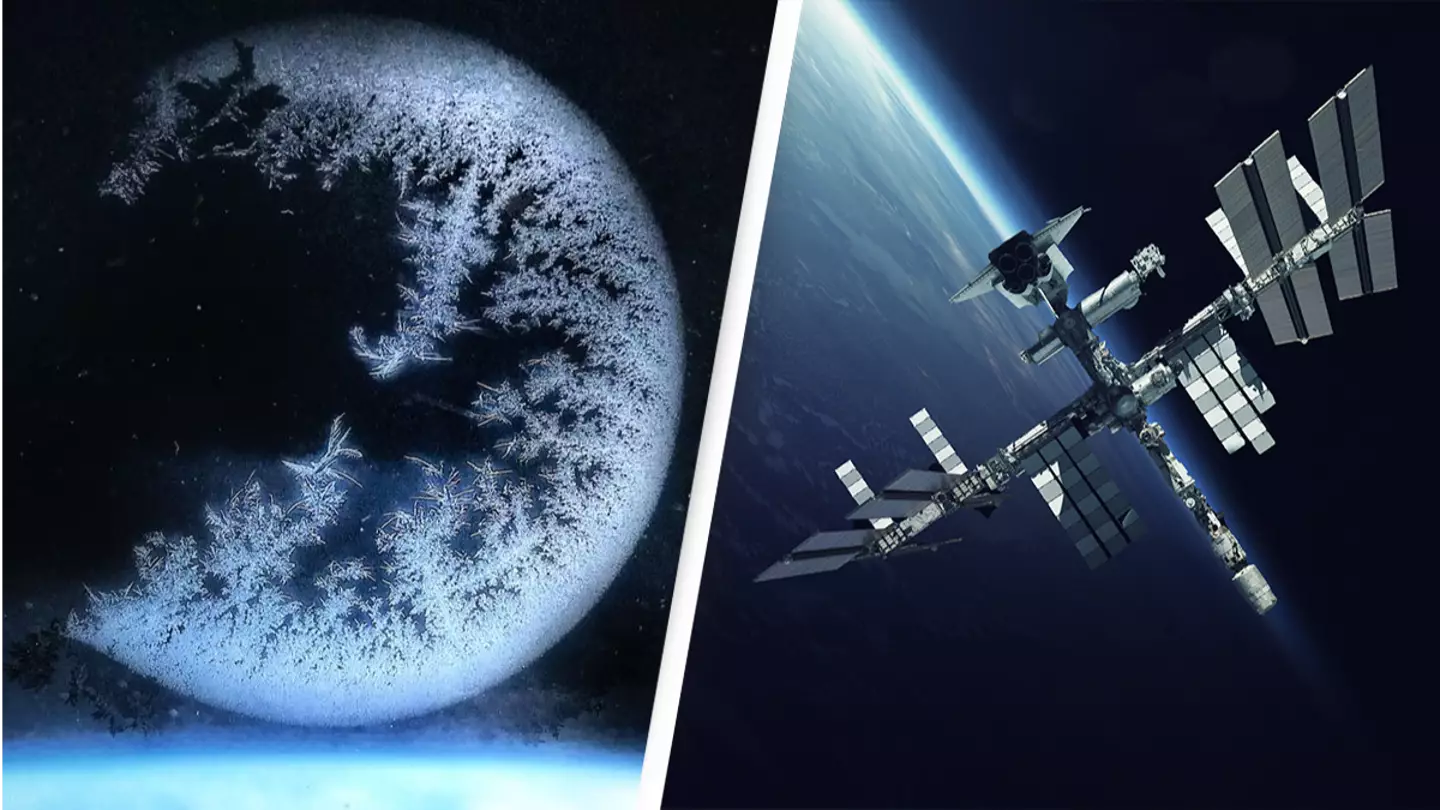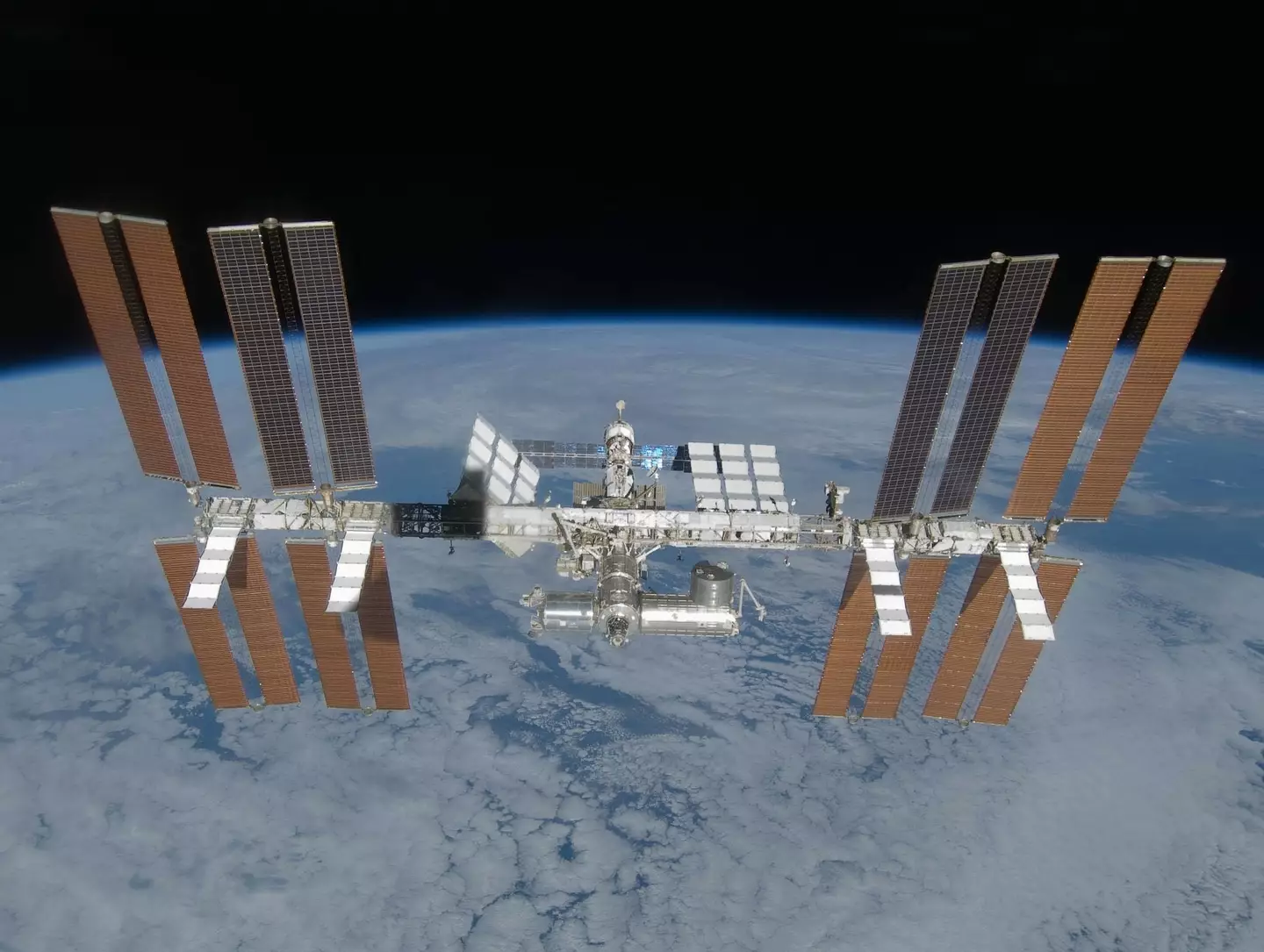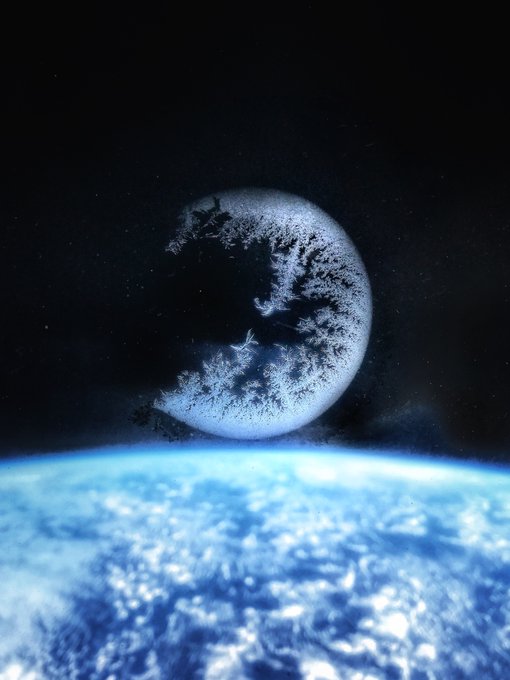
A photograph of ice crystals shaped like a moon on a window of the International Space Station has left people baffled over exactly how the scene could have formed.
The image was captured by cosmonaut Sergey Korsakov last month, after which he shared it with the rest of us down on Earth via Twitter and Telegram.
In his post on Telegram, Korsakov said the ice crystals lasted for about 24 hours and that the condensation pattern was visible even after they had melted.
Though pretty, the scene probably wouldn't be quite as baffling if had taken place on Earth. However, the image is thought to be the first showing ice crystals forming on a window in space, and it's unclear exactly how they could have formed the way they did.
Advert
The windows on the ISS are made up of multiple panes, with the internal ones separated by air while the external ones a split with a vacuum. The ice crystals could have formed on the inside of the space station, or between the panes - it's hard to tell from the image, and unfortunately ISS members NASA, the European Space Agency (ESA), and the Japanese Space Agency (JAXA) are said to be hesitant to shed light on the situation.
This is because the window could be located in the Russian module of the ISS; a point of contention due to the ongoing Russian invasion of Ukraine.
Dr James Lea, a glaciologist at the University of Liverpool, told IFLScience: "The feature seems to have most ice at the borders of the circle – this suggests the formation mechanism is acting equally from all sides, reaches a threshold to form ice at the circle edge, and then all water vapour is depleted before it gets to the middle."
"The bits of ice that extend into the middle are ice crystals being ice crystals and using themselves to help expand out – they can't go outside the circle as it's too warm," he continued.

Dr Tom Whale, an expert on the role of ice nucleation in atmospheric science and cryobiology from the University of Warwick, suspected the near-perfect circle of ice could indicate a 'temperature gradient across window'.
Advert
"You might expect the contact point between the window and the hull of the space station at the window perimeter to be warmer than the centre of the pane," Whale told IFLScience.
He continued: "If there is a little water vapour in a cavity between panes of the window, or perhaps a leak of relatively moist air from the space station into the cavity, it may be that ice tends to form at the point on the window where it gets cold enough for ice to form, and then grows inward from there. The circular shape of the ice may reflect a circular window geometry."
As a definitive answer as to how the crystals formed remains to be seen, the curious people of Earth will just have to continue speculating.
If you have a story you want to tell, send it to UNILAD via [email protected]
Topics: International Space Station, Space, World News, Science

